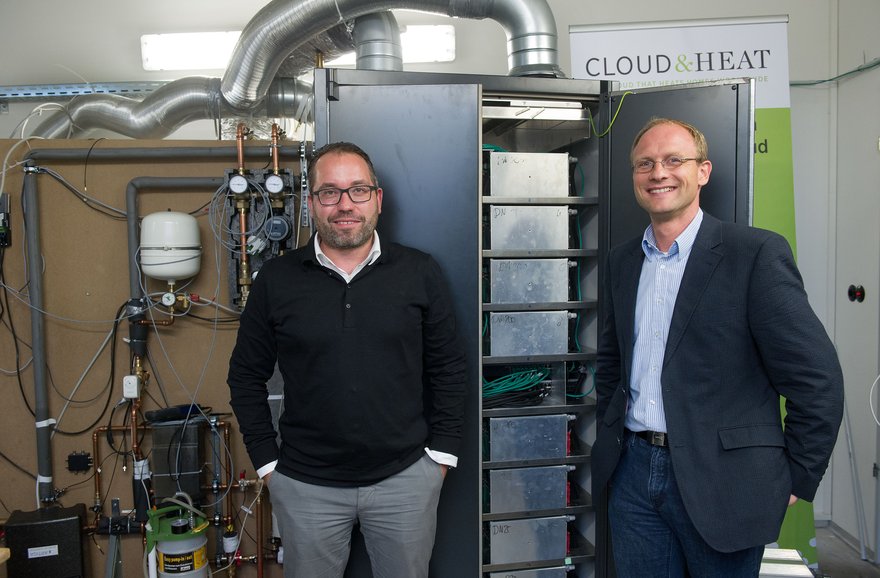The idea of cloud heating won’t go away. Germany now has a company, Cloud&Heat, which offers free hot water from a distributed data center installed in your office.
Cloud&Heat places servers on remote premises (potentially your office). They process data for Cloud&Heat’s data customers, and heat your building with the waste heat. Cloud customers get cheap pay-as-you-go cloud compute, block storage and object storage, based on OpenStack. Heat customers (the people who host the server cabinets) get free heating.
It’s a similar deal to Qarnot, the French outfit we mentioned a couple of weeks back. But where Qarnot is planning to offer domestic heating with a wall-mounted four-processor radiator, Cloud&Heat is pitching a bigger unit. Its site says it could work for single-family dwelings, but the pictures show a sizeable cabinet that would be more at home on business premises.
Cloud Exchange offering
It also appears that the Germans may be ahead in implementation - Cloud&Heat’s site offers a free trial of the cloud services provided by its distributed data center, and the site proclaims that these services are available on the Deutsche Börse Cloud Exchange (DBCE). Presumably, as all cloud services are based on standardisation, the company’s cloud offering looks more or less like what you get from other operators.
The heating side of the equation is more interesting. You pay up front to have a fire-proof cabinet installed. The installation cost is about the same as a conventional heating system, the company says, and it then provides hot water and room heating free of charge. Cloud&Heat pays the Internet and electricity bills for the unit.
Cloud heat has a problem of matching supply and demand: data processing isn’t necessarily needed at the same time as heat is required. Cloud&Heat’s units have a buffering tank to store the hot water till it is needed.
The system can be used in conjunction with other heating systems. And the unit is also arranged to vent excess heat outside in summer when no heating is required.
Essentially, Cloud&Heat is eliminating its real-estate costs and some of its hardware expenses. The servers in the cabinets operate unattended - though they may need upgrading every three years or so. So Cloud&Heat will have to take on some service calls and truck rolls to keep the system going.
Cloud sans frontieres?
Security is an interesting aspect. Cloud&Heat nods to data sovereignty by assuring data customers that all their data is kept within German borders. However, I assume you won’t know where your data is kept - because it could be assigned to any of the company’s heat customers.
Your data is not on a secure site, but it is encrypted, and Cloud&Heat says only its own employees can get into the cabinets. But without the reliable power and network infrastructure provided in data centers, cloud customers will need a lot of reassurance that the distributed system can re-route and restore servers if there is any problem with network or power to the heat customer’s location.
As always, I’m left with some questions. How real is this? How many heat customers does the company have, and does it have any arrangements with other cloud providers to supply extra capacity if there is a mismatch between heat and cloud demands?
I’ve yet to hear anything directly from the company, but a few photos on a website produced by the government of Saxony suggest the comany’s cabinets conceal a fairly non-standard configuration (left) - it looks like an array of individual servers wired together, instead of a conventional rack.
I’m hoping to hear more form the company in due course.
But I have to admit, despite all the questions I am warming to the idea of cloud heating..
A version of this article appeared on Green Datacenter News.

